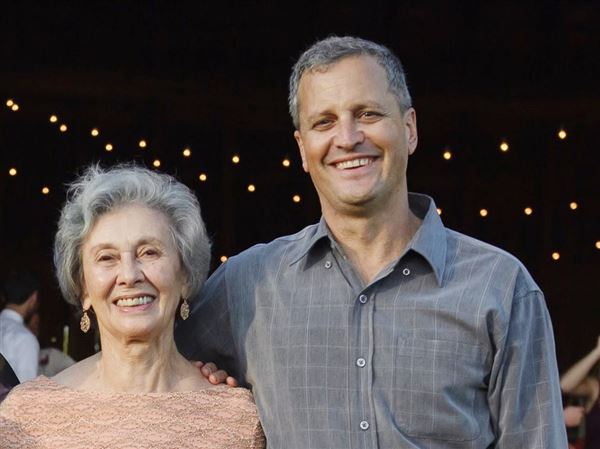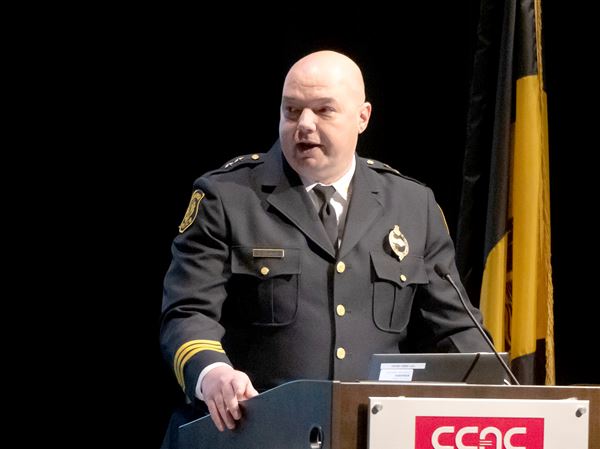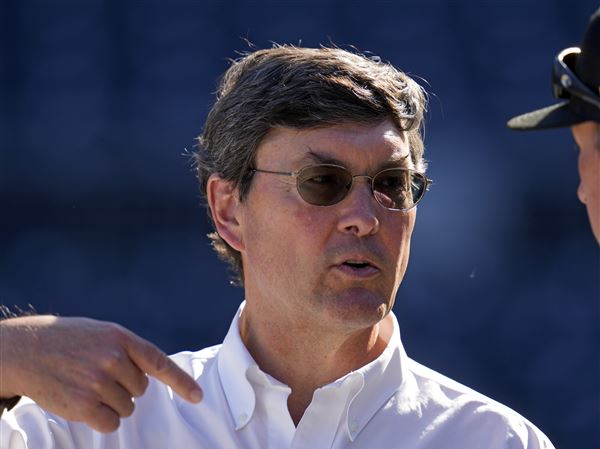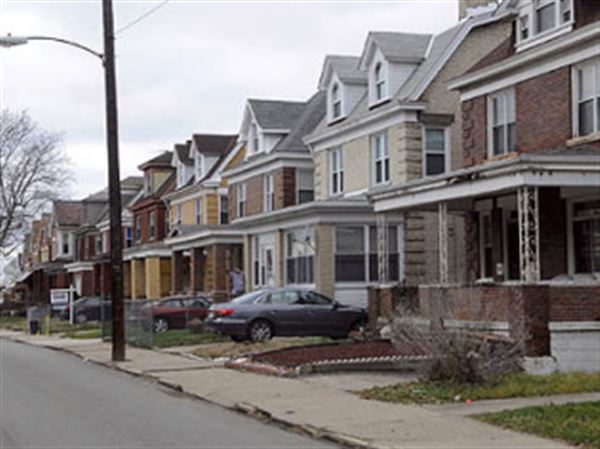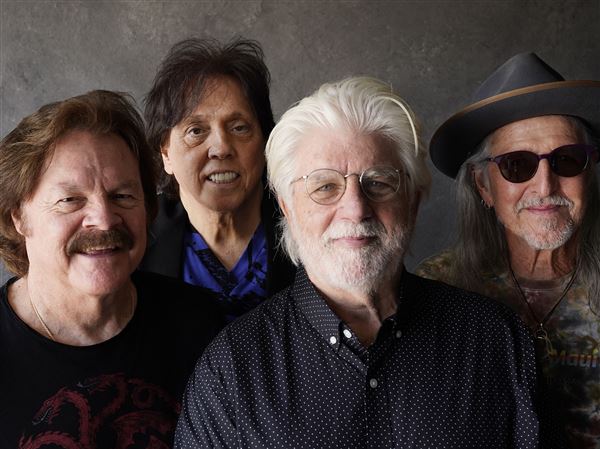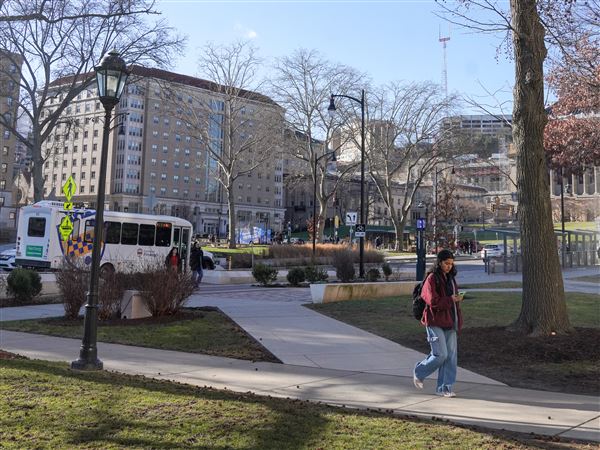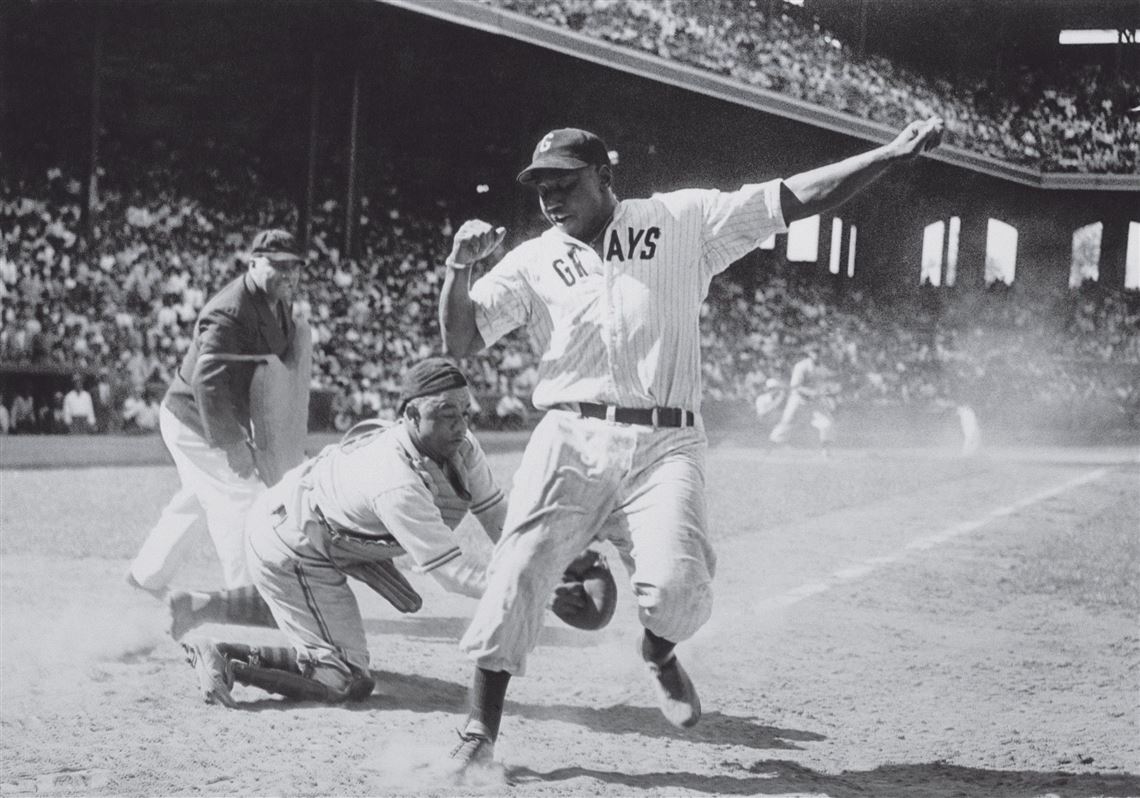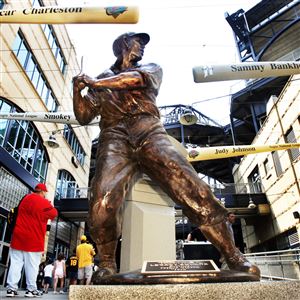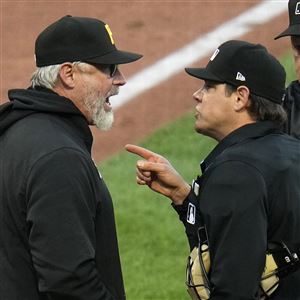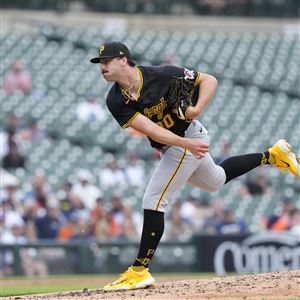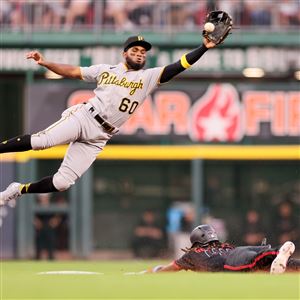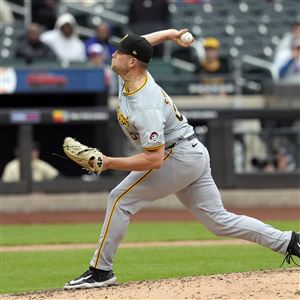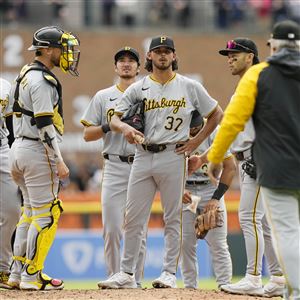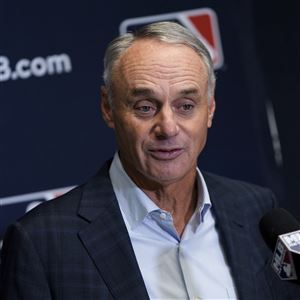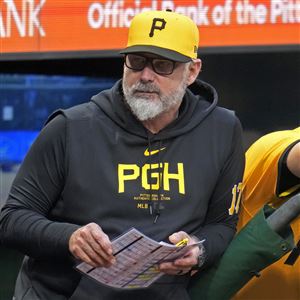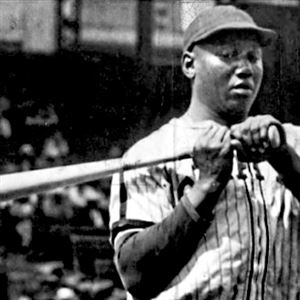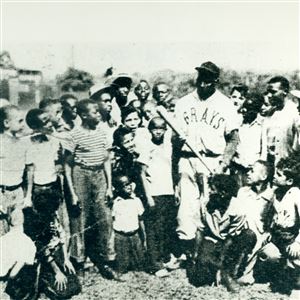It has been Sean Gibson’s lifelong goal to honor the legacy of his great-grandfather, former Pittsburgh Crawfords and Homestead Grays catcher Josh Gibson.
But as much good as the younger Gibson has achieved through his role as executive director of the Josh Gibson Foundation, Wednesday represents a mammoth home run — and maybe the most important day ever — when it comes to how many view the prodigious slugger.
After a 3 1/2-year wait, Major League Baseball is finally incorporating Negro Leagues statistics into its record books, honoring Gibson and the 2,300 or so other players who played in the seven iterations of Black baseball from 1920-48.
When it comes to Josh Gibson, who was born in Georgia and moved to Pittsburgh around the time he was 12, a formal argument can now be made for him to be considered the best hitter ever. After all, Gibson’s now considered MLB’s career leader in batting average, slugging percentage and OPS, in addition to holding the No. 1 single-season marks in those categories.
“It’ll be a big day for the Josh Gibson family and our Negro Leagues family,” Gibson told me over the phone. “We’re excited.”
Re-writing the books
This process, of course, was not simple. It was spearheaded by the Negro Leagues Statistical Review Committee, which was comprised of Negro Leagues experts, baseball historians, ex-players, journalists and researchers. The group reviewed box scores, stats and other relevant information that was uncovered by such services as the Elias Sports Bureau, Seamheads and Retro Sheet.
The changes are significant.
Gibson’s career average of .372 pushes him past Ty Cobb (.366), while the former’s slugging percentage (.718) moves him ahead of Babe Ruth (.690). The same goes for Gibson’s OPS, the mark of 1.177 also pushing him past the Babe (1.164).
When it comes to single-season records, Gibson’s .466 average for the Grays in 1943 is now considered the best in MLB history, eclipsing fellow Hall of Famer Hugh Duffy (.440 in 1898). Fellow Negro Leagues star Charlie Smith (.451 for the 1929 New York Lincoln Giants) actually ranks second.
Barry Bonds’ slugging percentage of .863 from 2001 dropped from first to fifth, with Gibson’s .974 from 1937 taking over the top spot. Gibson’s incredible OPS marks of 1.474 in 1937 and 1.435 in 1943 now occupy the top two spots.
It’s not just Gibson, either.
Willie Mays now has 3,293 career hits with his numbers from the 1948 Birmingham Black Barons added. Jackie Robinson picked up an additional 49 thanks to his Kansas City Monarchs total from 1945. The record adjustment gives Paige (1.01 for the Monarchs in ’44) the third-best single season ERA.
But as encouraging as it might be for MLB to justly honor these great players, along with Oscar Charleston, Buck Leonard or Minnie Minoso, Gibson knows the Negro Leagues legacy runs much deeper, which is why the Oakdale resident has been busy with interview requests from ESPN, CNN, CBS and more.
“I always try to use our platform to help others,” Sean said. “My phone hasn’t stopped, but it’s exciting. I’m just so happy for all of the families this impacts.”
Spinning it forward
I’ve gotten to know Sean Gibson well over the years, and it’s easy to respect and appreciate all the good that he does in the community. The Josh Gibson Foundation runs several programs based on the STEAM (Science, Technology, Engineering, Arts and Math) curriculum, as well as mentorship programs for young males and another through Point Park on the business of sports.
We’re lucky to have Sean Gibson here because of the positive impact he continually has on area kids, but there’s another side to Gibson that I’ve really come to admire — his work advocating for Negro Leagues players and their families.
“My grandfather always told me, ‘The most important thing you have in life is your name,’ ” said Sean Gibson, who went to Langley before playing college hoops at Robert Morris and Edinboro. “I took that to heart.”
Thousands of Negro Leagues families can be thankful for the work Gibson has done — and he’s hardly finished.
In addition to the revamped numbers, Gibson has two more immediate goals.
One is to rename at least one of the Baseball Writers’ Association of America’s MVP awards — in either the National or American League and perhaps both — after Josh Gibson. The other is to adopt a Negro Leagues Day throughout MLB every May 2 that looks similar to those already held for Jackie Robinson and Roberto Clemente.
The BBWAA award used to bear the name of former commissioner Kenesaw Mountain Landis, but it was (rightfully) removed in 2020 due to his racially discriminatory past.
“Now that the numbers are official, we feel we would make a great case for why the MVP award should be named after Josh Gibson,” Sean said. “Even though the stats are great, we’re still not finished. I still believe the MVP award should be named after Josh.
“It wouldn’t just be representing Josh Gibson. It would be representing all the men in the Negro Leagues who were denied the opportunity to play baseball because of Kenesaw Mountain Landis.”
When it comes to the other part of Gibson’s vision, he’d love to see every MLB team adopt the uniform of their closest Negro Leagues team. It might present a fun challenge in Pittsburgh, as the Pirates would have to choose between the Grays and Crawfords.
Both employed Josh Gibson. They’re also two of the most successful franchises throughout Negro Leagues history. The date was chosen because May 2, 1920 was when the first game of the inaugural Negro National League season was played, a contest between the Indianapolis ABCs and the Chicago Giants.
“It’s not taking anything away from Jackie Robinson,” Sean Gibson said. “We love Jackie Robinson. But that celebrates one person.
“With a national Negro Leagues day, you’re celebrating all the players who sacrificed in the Negro Leagues.”
Wanting to ensure everyone is included is what has helped Gibson form friendships with the families of so many Negro Leagues families — Buck Leonard, Satchel Paige and more. In fact, Sean Gibson co-founded the Negro Leagues Family Alliance and every year leads an effort to visit area cemeteries and place markers on the graves of former Black baseball stars.
But as much of himself as he dedicates to honoring deceased Negro Leagues stars, it was actually a living one — Detroit native Ron Teasley — who has been on Gibson’s mind most of late.
Teasley is one of only three living former players to have appeared in a Negro Leagues game between 1920-48. With the statistical excavation taking longer than Gibson or many others anticipated, he worried whether the 97-year-old would see the day his stats became official.
“I knew we had a chance to do something where he’s still living, and he can see his name in the MLB record books before he passes away,” Sean said.
Jason Mackey: jmackey@post-gazette.com and @JMackeyPG on X.
First Published: May 29, 2024, 2:02 p.m.
Updated: May 30, 2024, 1:55 a.m.
